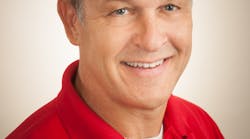Heating and Cooling a Home - Is it Practical to Move Beyond Fossil Fuels?
The properties we call home, and the people and pets that occupy them need reliable temperature regulation. The U.S. Environmental Protection Agency (EPA) reported that space heating accounts for approximately 42 percent of energy use in U.S. residences and about 36 percent of energy use in U.S. commercial buildings.1 Most of us use conventional and widely available fossil fuels like propane, coal, natural gas, and oil. Yes, the demand for this temperature regulation is fundamental. It’s not going away. But the delivery method of that need has prompted bigger, greener thinking and a shift toward emerging technologies.
That’s exactly where geothermal energy has presented an opportunity.
Why a St Louis Company Added Geothermal HVAC to Their Services
St Louis heating and cooling company, Hoffmann Brothers, is one of a handful of companies that made the decision to take climate action, to learn about the emerging geothermal industry and to eventually step into the market. After a period of research, the team equated the green renewable energy source, coupled with significant Federal tax credits for residents and businesses, as a big enough win to begin a partnership with GeoComfort, the Illinois based manufacturer that launched in 2007.
Hoffmann Brothers developed a training regimen to incorporate geothermal heat pumps and now provides geothermal heating, cooling and hot water system installation and servicing to properties around the greater St Louis area. Many companies are beginning to follow suit.
What is Geothermal Heating and Cooling?
The Earth provides a tremendous amount of usable heat and energy. Geothermal heating and cooling is when you capture that energy from the ground and channel it for use to heat and cool your property. The energy source is free, does not pollute, and is considered a renewable energy source.
The main benefits of geothermal energy fall into two categories: 1. A Positive Environmental Impact and 2. Ongoing Financial Savings. Here’s a peek at both.
Considering the Environmental Impacts of Geothermal Heating & Cooling
When we think about how our home energy choices impact our planet, consider that geothermal energy provides these benefits:
- Geothermal systems produce no on-site emissions.
- According to the EPA, the equivalent of planting 750 trees occurs when replacing an ordinary HVAC system with a geothermal system.
- The EPA also notes that geothermal systems are proving to be the most energy efficient, environmentally sound and cost-effective temperature systems available.
- Every 100,000 homes using geothermal heat pump systems reduce our consumption of electricity by 799 million kilowatt hours annually.
Geothermal Heating & Cooling: How Money Plays a Part
Finances are an important motivator for most. The financial benefits for choosing geothermal energy are noteworthy:
- The U.S. General Accounting Office calculates that if geothermal systems were utilized across the country, it would represent a savings of several billion dollars annually in energy costs, all while and significantly reducing pollution
- There are a number of significant tax credits and rebate programs available across the nation when consumers install a geothermal ground source heat pump
- Savings on utility bills become a huge factor: Geothermal systems create homeowner savings of 30 to 70 percent in heating mode and 20 to 50 percent in the cooling mode as compared to conventional HVAC systems
- $25 million dollars in energy expenses are saved each year by U.S. Schools implementing geothermal as their primary heating and cooling energy source.
Here’s How Geothermal Heating and Cooling Works
Air temperature in any given location shifts with the changing seasons. But below the ground, the temperature four to six feet under the surface, it remains pretty constant all year long. Since the earth absorbs about 40 – 60 percent of the heat from the sun, we have stored heat and energy waiting for use. Geothermal systems collect that energy out of the ground and distribute it throughout your home or business property. A series of buried pipes act as the collectors and a connected heat pump provides the distribution. This system is commonly referred to as a geothermal loop.
How Do Geothermal Loops Work?
Installing a geothermal system onto a property will call upon a handful of options, chosen specifically for the specs of each property. The most popular options for geothermal loop systems include Vertical Loops, Horizontal Loops, Lakes and Wells.
The “loop” refers to how the warm energy is moved from the ground into your property, and how it is collected from your property to move back into the ground. The direction of the loops are set according to the seasons and what you require: heating or cooling.
Make a Shift Toward Geothermal Heating & Cooling
Where the goal includes moving away from fossil fuels, geothermal energy offers a strong choice for positive climate impact and a real win for consumers. An experienced and licensed geothermal heating and cooling company can inspect and evaluate your property to find the best geothermal option available to you. With more than one million homes now implementing geothermal heating and cooling, the time has never been better to make the shift, save our vulnerable planet, and enjoy the benefits of ongoing savings.
Footnotes
1. Environmental Protection Agency, Renewable Space Heating: https://www.epa.gov/rhc/renewable-space-heating.
Robert Hoffmann, P.E., is the original owner and current CEO of Hoffmann Brothers in St Louis, MO. He has built the company from four employees in 1988 to over 135 today. A registered Professional Engineer, Robert graduated from the University of Missouri Rolla with a BS in Mechanical Engineering. He guided the company from their original roots in residential and commercial heating and cooling to establish Hoffmann Brothers as an industry leader, now providing services for geothermal, plumbing, water heaters, drains, sewers, indoor air quality, ductless systems, appliance repair, electrical service and more.










